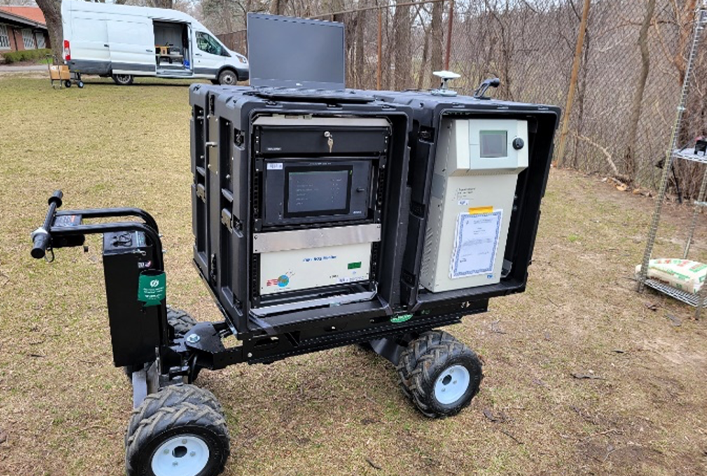Developing Tools and Techniques to Evaluate Near-Road Air Pollution Impacts and Mitigation

Project Brief
The Challenge
More than 50 million people are estimated to live within 100 meters of a large highway or other transportation facility (e.g., airport, rail yard) and over 4 million school children attend classes within 150 meters of a major highway. Studies have associated living, working, and attending school near highways and other large transportation facilities with adverse health effects, including asthma and other respiratory diseases; cardiovascular effects; birth and developmental effects; cancer (including childhood leukemia); and premature mortality. The U.S. Environmental Protection Agency’s Office of Research and Development and EPA Region 5 wanted to explore the ability of urban green infrastructure to improve local air quality and provide other benefits (such as carbon sequestration and reduction of the urban heat island effect). EPA contracted with ERG to develop tools and techniques to evaluate near-road air pollution impacts and the effectiveness of green infrastructure as a mitigation measure.
ERG's Solution
ERG supported EPA scientists and other partner organizations in the greater Chicago metropolitan area in assessing the use of vegetative barriers in mitigating the effects of nearby roadway air pollution and improving air quality near schools. ERG has previously designed and built mobile and stationary measurements platforms for EPA that have been used in researching air pollution impacts and mitigation techniques at numerous locations across the United States. Both have strengths and limitations. For example, vehicle-based mobile measurement platforms provide high spatial-temporal resolution data but require accessible roads near the areas of interest. Stationary platforms often deploy portable lower-cost sensors that have accuracy, precision, detection, and reliability limitations. To meet the accessibility and performance requirements necessary for monitoring air quality near and within schools, ERG engineered a new device, called the ROVER-AQ, that deploys high-resolution instrumentation on a portable platform.
After laboratory and pilot-scale testing confirmed the new ROVER-AQ’s ability to provide high-resolution spatial and temporal mobile monitoring capabilities, ERG scientists deployed the platform within and around the Chicago schools of interest to collect 1 Hertz measurements of pollutants commonly released in near-road environments. This work also provided an educational opportunity. EPA and ERG scientists led air quality educational sessions with over 600 students to describe the study and demonstrate the new air monitoring equipment. Development of this innovative measurement platform has enabled EPA, working with partner organizations in the greater-Chicago metropolitan area, to gather the high-resolution air quality data needed to assess the efficacy of vegetative barriers for improving air quality near schools and other buildings, with the goal of creating cleaner air for school and local communities.
Client
U.S. Environmental Protection Agency